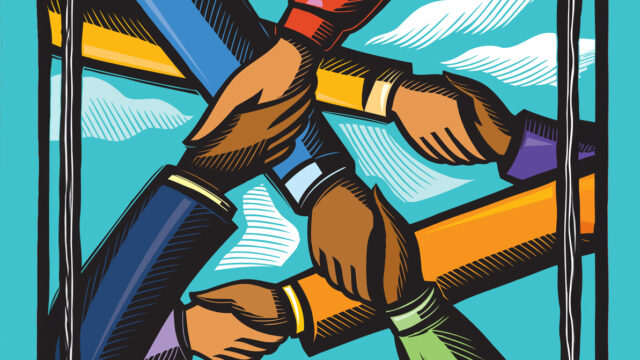Holding company agencies sprawl, rife with redundancies and complexity that leave clients with questions. While some of its competitors execute mergers to tackle that challenge, Omnicom Media Group (OMG) has found its own solution: the agency-as-a-platform (AaaP) model.
Simply put, the group wants the market to view it as a platform—a multifaceted and flexible organization equipped to address clients’ most complex issues using a combination of technology and tools available across all its agencies.
This summer, OMG formalized its AaaP model by restructuring its new business operations under OMG. Now, when the group receives a new business pitch, network and individual agency leaders approach the pitch strategically, deciding which agency or OMG toolset is most likely to achieve the client’s goals and win the business.
Adweek sat down with OMG Worldwide CEO Florian Adamski, OMD USA CEO Chrissie Hanson, PHD USA CEO Mike Solomon and Hearts & Science U.S. CEO Chris Stanger to discuss how agency leaders collaborate under the AaaP structure, and how the network’s Omni technology makes teamwork easier.
This interview has been lightly edited for length and clarity.
On the AaaP strategy
From a marketing perspective, how do you convey what makes each agency unique relative to its sister agencies?
Adamski: The media agencies all have data analytics capabilities, but they are distinct. We start talking about what defines OMD, PHD and Hearts. Then, during the process, clients actually make a decision based on who they want to see, who they want to meet and, ultimately, which type of solution they want to go with.
We’ve had clients that switch lanes [and select a different lead agency] during the pitching process. I think it’s important to keep that fluidity in mind, which this model allows.
Hanson: It comes down to orchestrating as a leadership team and ensuring that OMG is supportive. It’s important to clarify the client’s need, like what projects are urgent or not so urgent. When people are good communicators, you find you don’t have many issues at all.
Could leveling up new business to the group level create any bottlenecks?











